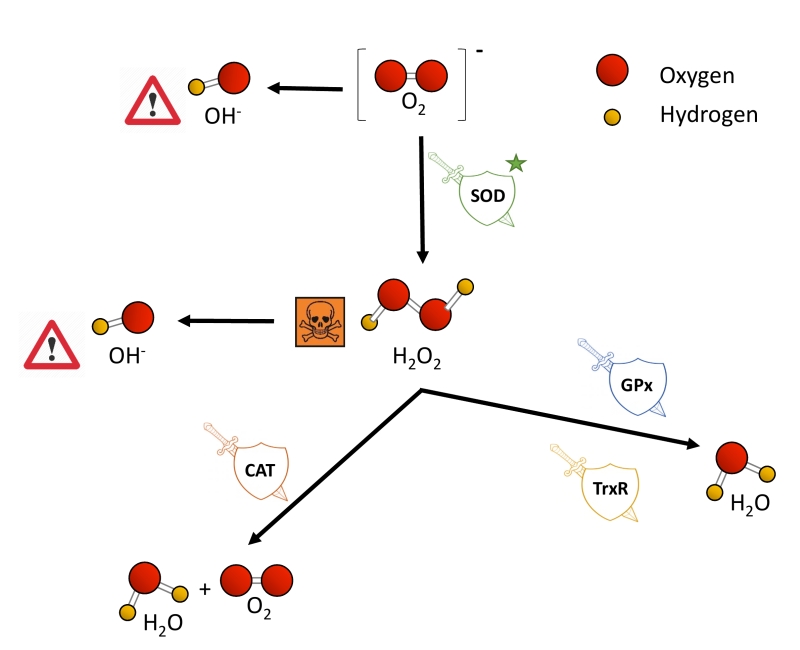Back to article: Mitochondrial stress management: a dynamic journey
FIGURE 2: Toxic ROS generation and enzymatic antioxidant defenses. Cells encompass a group of enzymes which help counterbalancing the potential detrimental effects of ROS production upon toxic levels. O2–, generated as a by-product from the electron transport chain in mitochondria, is converted to H2O2 by superoxide dismutases (SOD), which are the first and major line of defense against ROS. H2O2 accumulation is highly toxic for cells, and it is subsequently transformed to H2O and molecular oxygen by the catalase enzyme (CAT). Glutathione peroxidases (GPx) and thioredoxin reductases (TrxR) also aid in the conversion from H2O2 to water. Independently, H2O2 is also converted to OH–.

